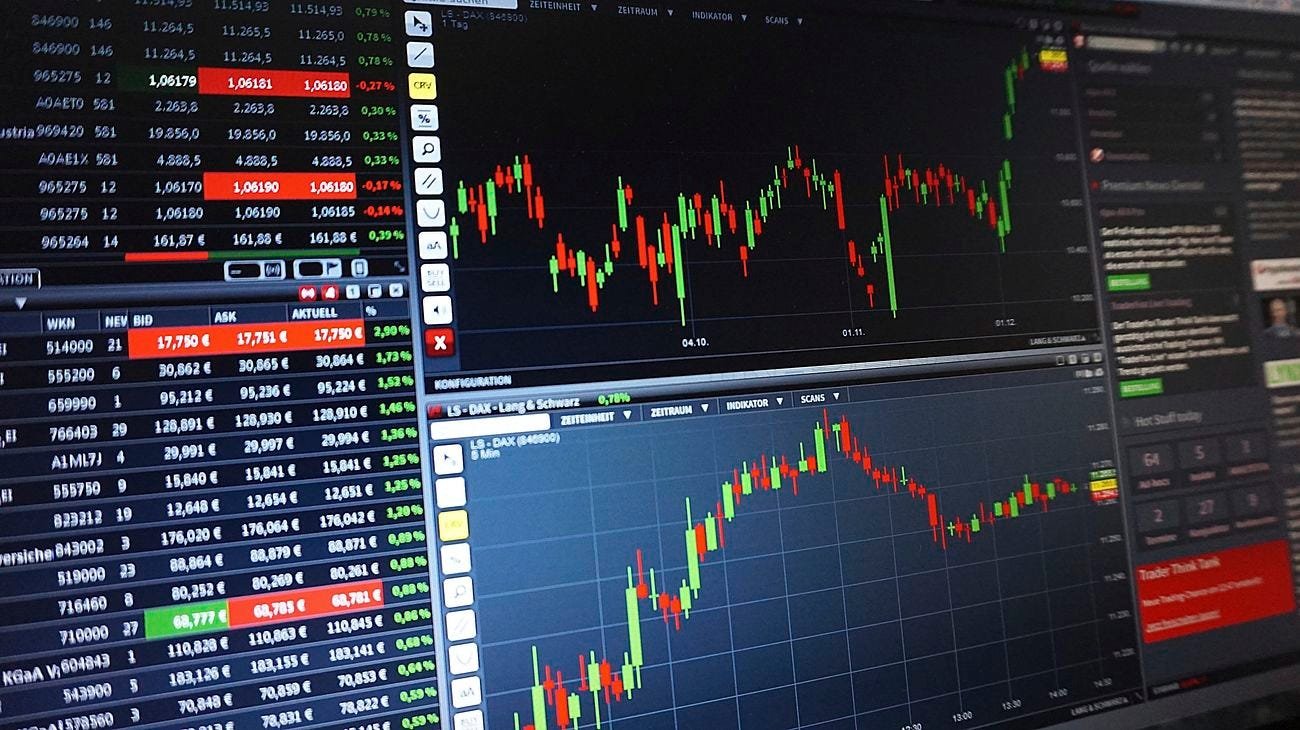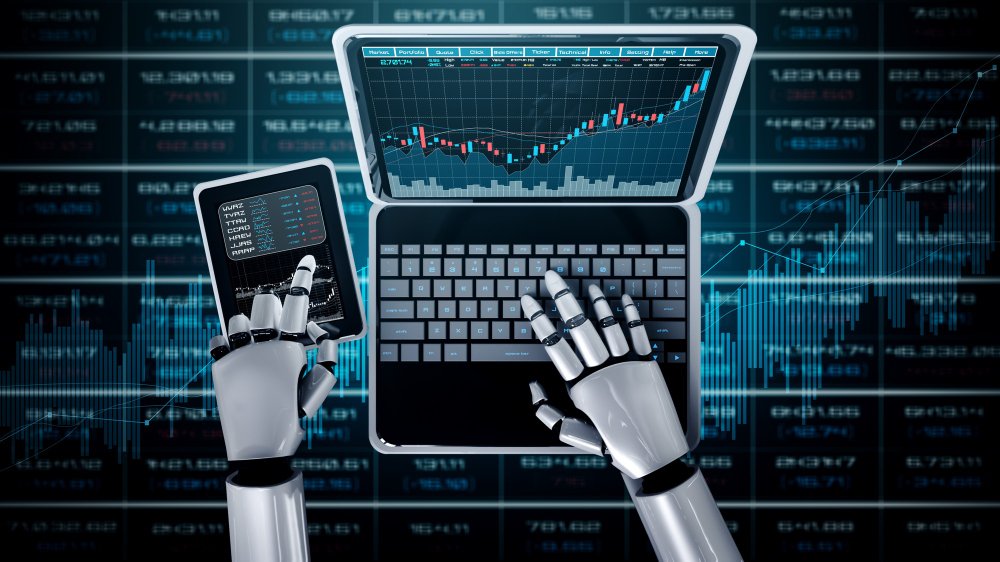Algorithmic Trading Bots: A Comprehensive Market Study
- 1 How Algorithmic Trading Bots Work
- 1.1 Algorithmic Strategies and Trading Signals
- 1.2 Role of Machine Learning and Artificial Intelligence
- 1.3 Risk Management and Execution Algorithms
- 2 Key Players and Market Trends
- 2.1 Overview of Leading Algorithmic Trading Firms
- 2.2 Market Size and Growth Trends
- 2.3 Regulatory Environment and Compliance Challenges
- 3 Advantages of Algorithmic Trading Bots
- 3.1 Efficiency and Speed in Trade Execution
- 3.2 Reduced Emotional Bias in Trading
- 3.3 Backtesting and Performance Evaluation
- 4 Risks and Challenges
- 4.1 Technical Glitches and System Failures
- 4.2 Market Manipulation and Regulatory Scrutiny
- 4.3 Ethical Considerations and Algorithmic Fairness
- 5 Future Outlook
- 5.1 Emerging Technologies in Algorithmic Trading
- 5.2 Integration of Cryptocurrencies and Digital Assets
- 5.3 Ethical and Regulatory Evolution in Algorithmic Trading
- 6 Conclusion:
- 6.1 FAQs:
- 6.1.1 How do algorithmic trading bots work?
- 6.1.2 What role do machine learning and AI play in algorithmic trading?
- 6.1.3 What are the advantages of algorithmic trading bots?
- 6.1.4 What are the risks associated with algorithmic trading?
- 6.1.5 How do algorithmic trading bots impact market integrity?
- 6.1.6 What emerging technologies are shaping the future of algorithmic trading?
- 6.1.7 How will regulatory scrutiny evolve in the algorithmic trading landscape?
In Short:
- Efficiency and Precision: Algorithmic trading bots execute trades swiftly and accurately, leveraging predefined strategies and analyzing vast amounts of data with machine learning and AI.
- Risk Management: These bots effectively manage risk by setting stop-loss orders and adhering to strict risk management rules, reducing the emotional bias associated with human trading decisions.
- Market Impact: Despite advantages in speed and consistency, algorithmic trading faces challenges such as technical glitches, regulatory scrutiny, and ethical considerations.
Technology is crucial in determining trading success in today’s fast-paced financial markets. One technological innovation that has revolutionized the industry is algorithmic trading, powered by trading bots. Algorithmic trading bots are computer programs designed to execute trading strategies automatically. In this comprehensive market study, we will explore the world of algorithmic trading bots, discussing their evolution, significance, and impact on modern financial markets. To gain further insights and access valuable resources, you can visit https://immediate-vortex.com/.
How Algorithmic Trading Bots Work
Algorithmic Strategies and Trading Signals
Algorithmic trading bots operate based on predefined strategies and trading signals. These strategies range from simple moving average crossovers to complex machine learning models. They analyze vast amounts of data, including price movements, volume, news sentiment, and historical patterns, to make trading decisions. The speed and precision with which these bots can analyze data far exceed human capabilities.
Role of Machine Learning and Artificial Intelligence
Machine learning and artificial intelligence (AI) are at the core of many advanced algorithmic trading bots. They enable bots to adapt to changing market conditions and continuously improve performance. By learning from historical data, machine learning algorithms can identify patterns and relationships humans may miss, making algorithmic trading even more effective.
Risk Management and Execution Algorithms
Algorithmic trading bots not only execute trades but also manage risk effectively. They can set stop-loss orders, adjust position sizes, and meticulously adhere to risk management rules. This reduces the emotional bias associated with human trading decisions and ensures consistent risk management strategies are followed.
Key Players and Market Trends
Overview of Leading Algorithmic Trading Firms
Several financial institutions and hedge funds have emerged as leaders in algorithmic trading. Firms like Citadel, Two Sigma, and Renaissance Technologies have harnessed the power of algorithmic trading bots to generate significant profits. These firms invest heavily in research and technology, continuously refining their algorithms to maintain their competitive edge.
Market Size and Growth Trends
The algorithmic trading industry has experienced remarkable growth in recent years. According to industry reports, algorithmic trading accounted for a significant portion of total trading volumes across various asset classes. The trend is expected to continue as more market participants recognize the benefits of automation and speed in trading.
Regulatory Environment and Compliance Challenges
The increasing prevalence of algorithmic trading has prompted regulatory bodies worldwide to enact rules and guidelines. Ensuring market fairness and preventing market manipulation are top priorities. Compliance with these regulations is a constant challenge for algorithmic trading firms, and any violation can lead to significant fines and reputational damage.
Advantages of Algorithmic Trading Bots
Efficiency and Speed in Trade Execution
Algorithmic trading bots excel in executing trades with minimal delay, ensuring that opportunities in the market are not missed. They can react to market movements in fractions of a second, a feat impossible for human traders. This speed advantage is especially crucial in high-frequency trading (HFT) strategies.
Reduced Emotional Bias in Trading
One of the primary advantages of algorithmic trading is the removal of emotional bias. Human traders often make impulsive decisions based on fear or greed, leading to poor outcomes. Algorithmic trading bots execute strategies consistently without succumbing to emotional pressures, resulting in more rational decision-making.
Backtesting and Performance Evaluation
Algorithmic trading bots allow traders to backtest their strategies using historical data. This means that before deploying a strategy in live markets, traders can simulate its performance and assess its historical success. This process helps refine strategies, optimize parameters, and enhance overall performance.
Risks and Challenges
Technical Glitches and System Failures
Despite their advantages, algorithmic trading bots are not without risks. Technical glitches and system failures can lead to unexpected losses. The “flash crash” of 2010 is a prime example, where automated trading exacerbated market volatility. Ensuring robust risk controls and redundancy measures is essential to mitigate such risks.
Market Manipulation and Regulatory Scrutiny
Algorithmic trading can be used for market manipulation, prompting regulators to monitor trading activity closely. Market manipulation through spoofing, layering, and other techniques can distort prices and harm market integrity. Staying compliant with evolving regulations is a constant challenge for algorithmic trading firms.
Ethical Considerations and Algorithmic Fairness
Algorithmic trading also raises ethical concerns, such as the impact on market fairness and access to information. High-frequency trading, in particular, has been criticized for potentially disadvantaging retail investors. Striking a balance between market efficiency and fairness is an ongoing debate in the industry.
Future Outlook
Emerging Technologies in Algorithmic Trading
The future of algorithmic trading holds promise as technology continues to evolve. Quantum computing, blockchain technology, and AI and machine learning advancements are expected to revolutionize algorithmic trading further.
Integration of Cryptocurrencies and Digital Assets
Cryptocurrencies and digital assets have introduced a new dimension to algorithmic trading. Cryptocurrency markets operate 24/7, providing ample opportunities for algorithmic strategies. The integration of digital assets into traditional markets is a trend to watch.
Ethical and Regulatory Evolution in Algorithmic Trading
The ethical and regulatory landscape will evolve as algorithmic trading shapes financial markets. Stricter regulations to ensure fairness and transparency will likely emerge, impacting how algorithmic trading firms operate.
In conclusion, algorithmic trading bots have become integral to modern financial markets, offering efficiency, speed, and precision. However, they come with their own set of challenges and ethical considerations. The algorithmic trading landscape will evolve as technology advances and regulatory scrutiny will intensify. Understanding the nuances of algorithmic trading is crucial for anyone navigating the dynamic world of finance.
Conclusion:
Algorithmic trading bots have revolutionized financial markets, offering unparalleled efficiency and precision. However, they bring challenges such as technical risks and ethical considerations. As technology evolves and regulations tighten, understanding the complexities of algorithmic trading is essential in navigating the dynamic financial landscape.
FAQs:
How do algorithmic trading bots work?
Algorithmic trading bots operate based on predefined strategies and trading signals, analyzing data using machine learning and AI to execute trades automatically.
What role do machine learning and AI play in algorithmic trading?
Machine learning and AI enable bots to adapt to changing market conditions, identify patterns, and continuously improve performance by learning from historical data.
What are the advantages of algorithmic trading bots?
Algorithmic trading bots offer efficiency, speed, and reduced emotional bias in trading decisions, along with the ability to backtest strategies for performance evaluation.
What are the risks associated with algorithmic trading?
Risks include technical glitches, system failures, market manipulation, and regulatory scrutiny, necessitating robust risk management and compliance measures.
How do algorithmic trading bots impact market integrity?
While they enhance market efficiency, algorithmic trading bots raise concerns about fairness and access to information, especially in high-frequency trading.
What emerging technologies are shaping the future of algorithmic trading?
Quantum computing, blockchain, and advancements in AI and machine learning are expected to further revolutionize algorithmic trading.
How will regulatory scrutiny evolve in the algorithmic trading landscape?
Regulatory frameworks will likely tighten to ensure fairness, transparency, and market integrity, impacting how algorithmic trading firms operate and innovate.


















